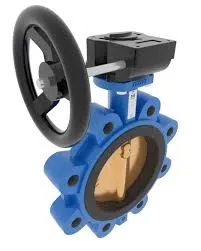Sep . 19, 2024 01:34 Back to list
silent check valve
Understanding Silent Check Valves Functionality and Applications
Silent check valves are essential components in various piping systems, specifically designed to prevent backflow while minimizing noise during operation. These valves offer a reliable solution for ensuring fluid flows in the intended direction without the disruptive sounds often associated with traditional check valves.
A traditional check valve operates on the principle of gravity and pressure differential. When the fluid flows in the forward direction, the valve opens, allowing the fluid to pass. However, when the pressure changes or fluid attempts to flow back, the valve closes to prevent reverse flow. This action can create a significant amount of noise, commonly referred to as water hammer, which can lead to pipe damage and increased maintenance costs over time.
The silent check valve addresses this issue through a more refined design. It utilizes a spring-loaded mechanism that allows for smoother operation. When fluid flows through the valve, the internal disc or piston is pushed open against the spring. This design allows for a gradual closure when the fluid direction shifts, significantly reducing the noise produced during operation. The quieter performance not only protects the system but also provides operational comfort, especially in environments where noise levels must be minimized.
silent check valve

Silent check valves are predominantly used in applications requiring one-way flow control, including water supply systems, HVAC systems, and industrial processes. They can be found in residential plumbing, commercial buildings, and manufacturing facilities, ensuring that processes operate efficiently without interference from backflow or noise.
Another advantage of silent check valves is their versatility in materials and sizes
. They can be constructed from various materials such as brass, stainless steel, or PVC, allowing them to be suitable for different liquids and operating conditions. Additionally, they are available in a range of sizes, accommodating a wide variety of pipe diameters and flow rates.Installation and maintenance of silent check valves are generally straightforward, but they should be placed in the correct orientation to ensure proper function. Periodic inspections are recommended to detect any wear or damage, ensuring that the valve continues to operate effectively throughout its service life.
In conclusion, silent check valves play a critical role in modern piping systems by preventing backflow while significantly reducing noise levels. Their reliability, efficiency, and ease of installation make them an ideal choice for various applications. As industries increasingly prioritize both functionality and comfort, silent check valves will continue to be an invaluable component in fluid management systems.
Share
-
Reliable Wafer Type Butterfly Valves for Every IndustryNewsJul.25,2025
-
Reliable Flow Control Begins with the Right Ball Check ValveNewsJul.25,2025
-
Precision Flow Control Starts with Quality ValvesNewsJul.25,2025
-
Industrial Flow Control ReliabilityNewsJul.25,2025
-
Engineered for Efficiency Gate Valves That Power Industrial PerformanceNewsJul.25,2025
-
Empowering Infrastructure Through Quality ManufacturingNewsJul.25,2025